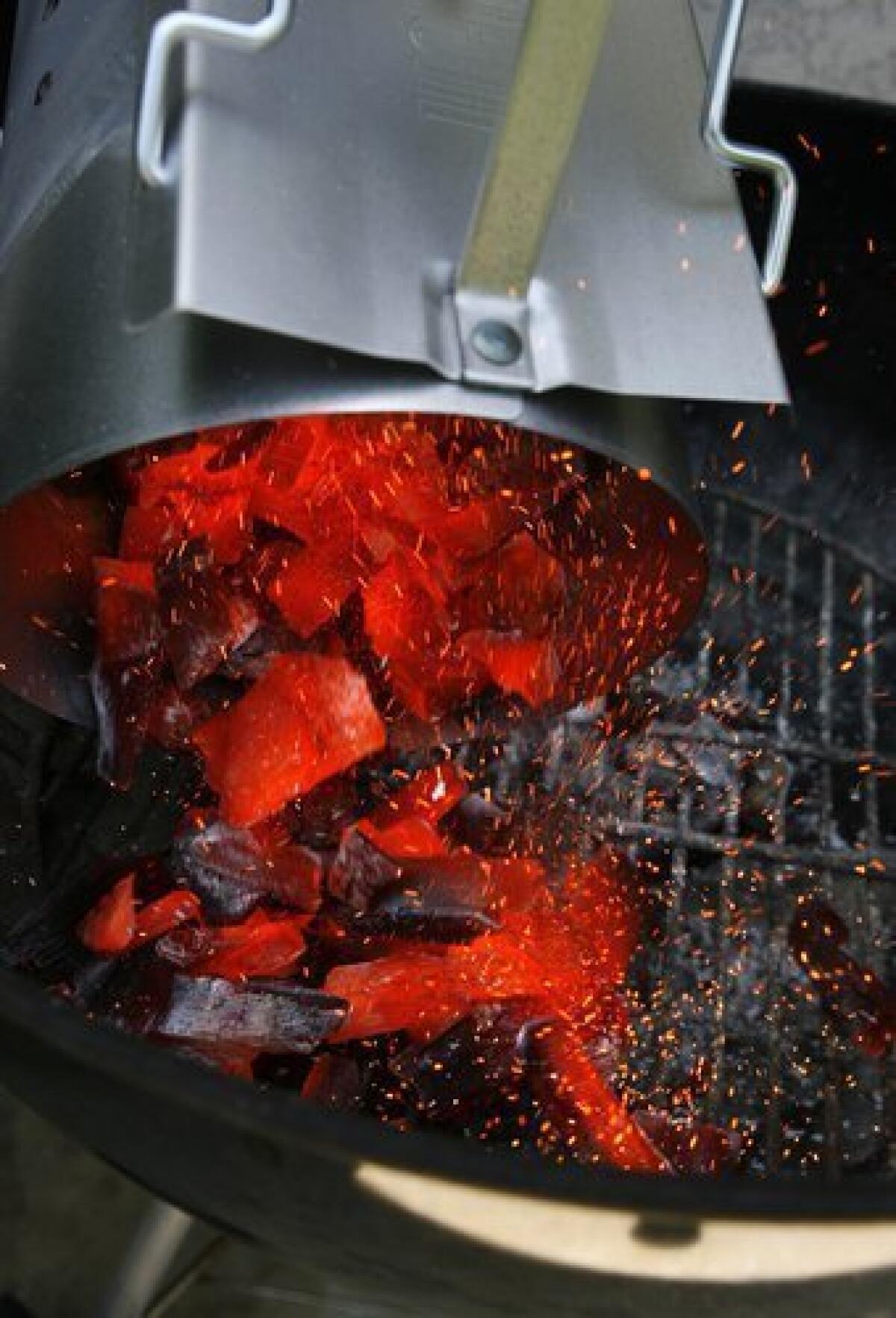Cooking up toxic air pollution

- Share via
When UC Davis scientists collected air pollution particles in Fresno and then exposed laboratory mice to them, they found that one of the most toxic sources was the backyard grill.
Along with particles from vehicle and wood-burning emissions, particulates from residential cooking had the greatest measurable impacts on mice lung function.
“That was like, wow!,” said Anthony Wexler, the study’s coauthor and director of the Air Quality Research Center at UC Davis. “It’s not that you’re cooking; it’s how you’re cooking. We think it’s the [charcoal] briquets that are the problem.”
The health effects of particulate pollution are well known, with the smallest particles considered the most harmful. Scientific studies have linked inhalation to heart and lung problems, including the premature death of those with heart or lung disease.
But Wexler said his research breaks new ground by collecting atmospheric samples and using them to gauge the toxicity of different sources of particle pollution.
“This is quite a bit more realistic about what we’re really inhaling,” said Wexler, who conducted the research with Kent Pinkerton, a professor of pediatrics at the UC Davis School of Medicine.
The particle samples were collected in 2008 and 2009 in Fresno, which has high rates of adult and childhood asthma.
If the results are validated by other research, Wexler said it may be more cost effective for air pollution regulations to focus on the source of particles and their toxicity rather than their size – the basis of current standards.
“If we’re just regulating the toxic sources, then we’re going to decrease the toxicity of the particles in the atmosphere. That’s going to save lives,” he said.
The study, presented Tuesday at a public seminar in Sacramento, was funded by the California Air Resources Board and the Electric Power Research Institute.







